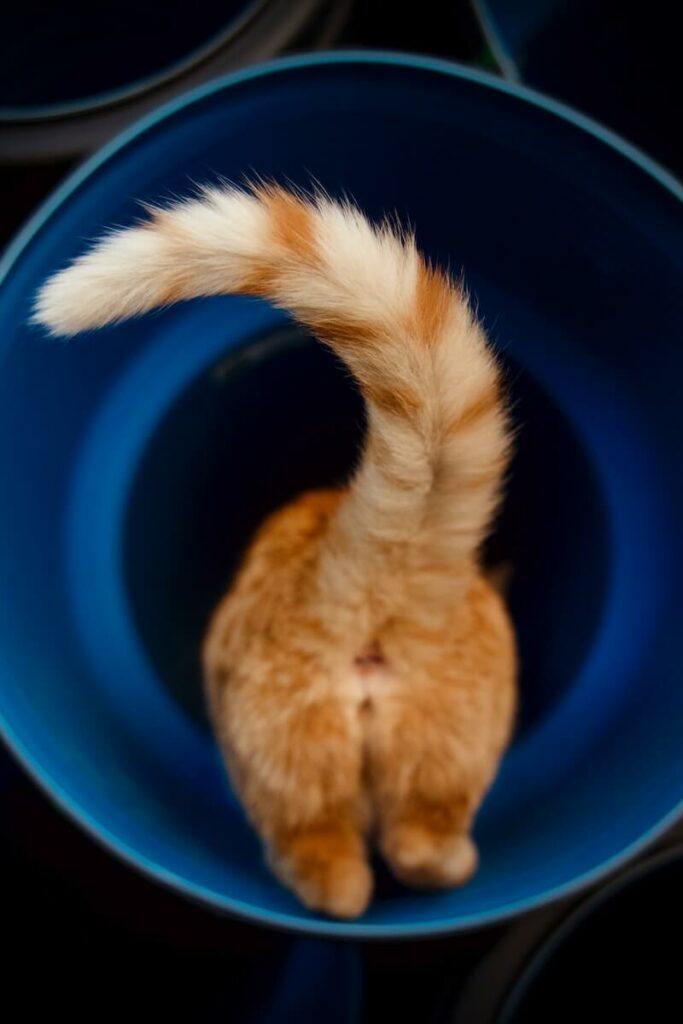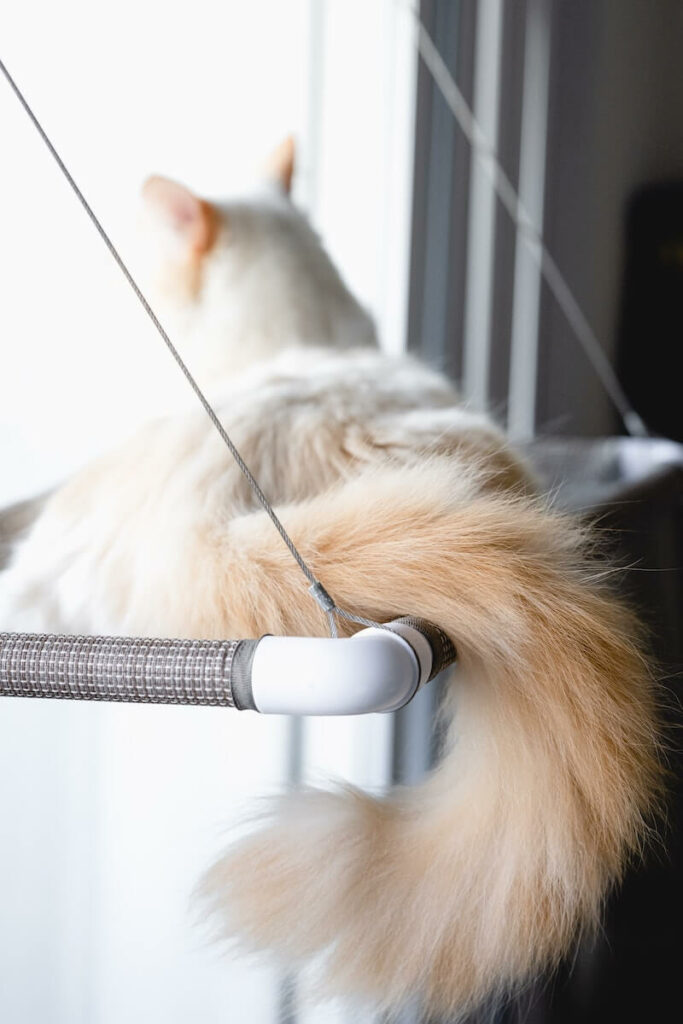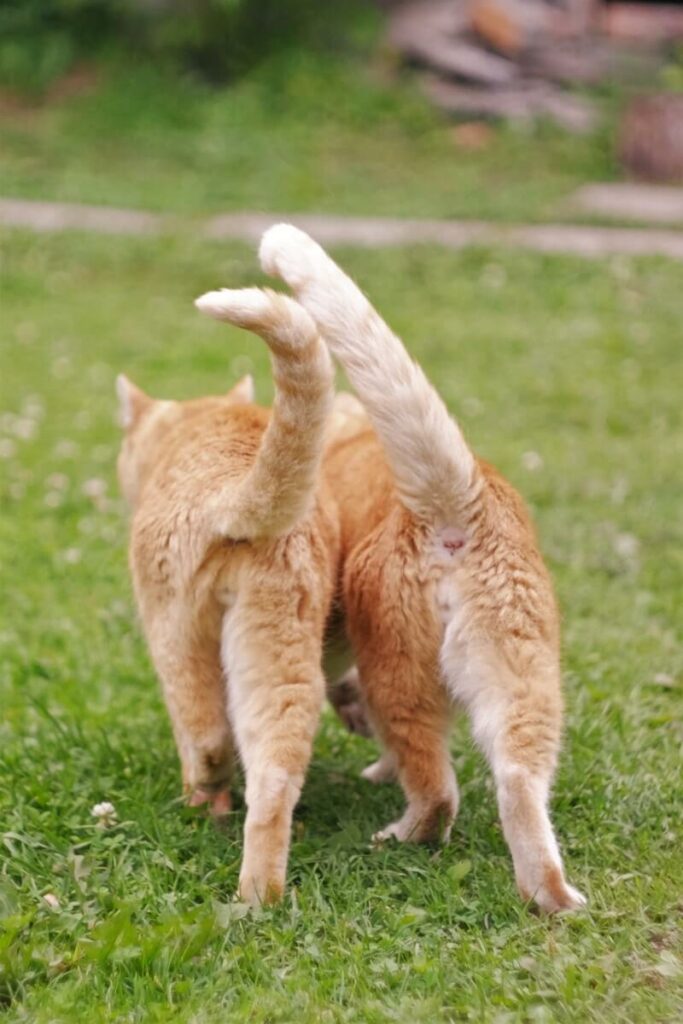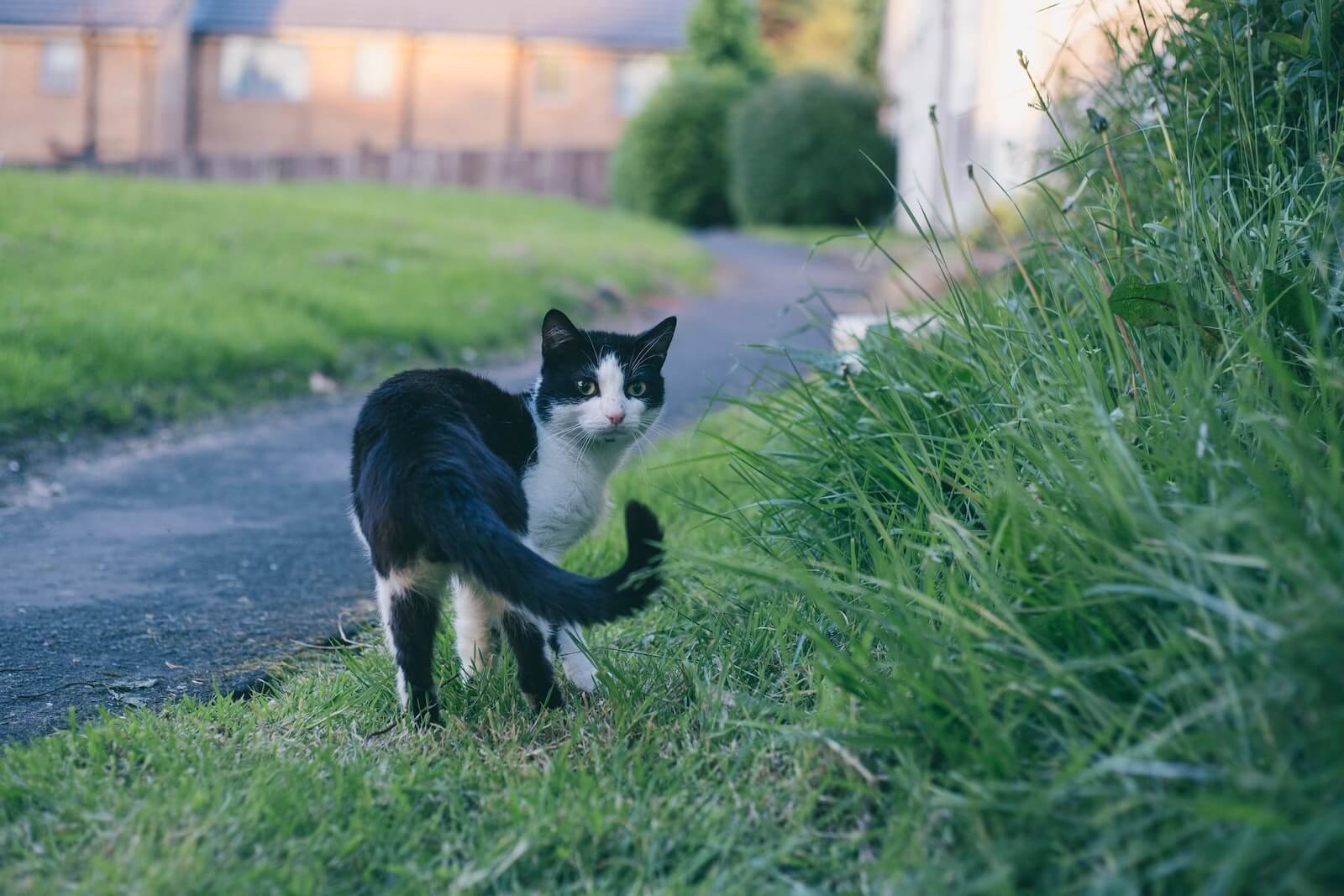Did you think dogs were the only animal that chased their tails? You may not have noticed it before, but cats also share this behavior, although it is not as expected. Why do cats chase their tails?
There are tons of videos on the internet of cats chasing their tails, so it’s a behavior that some cats engage in.
Unfortunately, we can’t know for sure. It could be any or all of these reasons. Or it could be something else entirely. The only way to know for sure would be to ask a cat, and we all know how difficult that can be!
It may be funny to see our kitten chasing its fluffy tail, and although it is a natural behavior, on some occasions, this simple action can be a sign of a health issue.
Why do cats chase their tails? Here are the top 5 reasons
Let’s untangle the top reasons why cats chase their tails:
Kitty cat is having fun
Cats are game lovers, and even if they don’t have a toy, they will find a way to have fun. When they are little, it is normal for cats to chase their tail as a game. Any object that moves is a source of endless fun, and what better than its tail that is always available to act as bait.

In this game, in which the cat tries to catch its tail and has a good time, it practices its hunting skills. These furry creatives are not limited to just going after their tail. They are regularly seen going after the rear of their mother and siblings.
Most cats stop playing with their tails when they grow up, but it wouldn’t be surprising that a puss continues to do so out of habit. If your adult cat has been chasing his tail since it was young, you can be sure that it is simply playing.
Although it is typical behavior for all cats, it tends to happen more often with house cats that cannot put these skills into practice in a natural context.
Your cat is bored or stressed
We have so many activities and objects to distract us in our free time that it is difficult to believe someone can be bored or have nothing to do. However, with pets, it is very different. They live in an environment controlled by us, and if we don’t provide them with fun toys, distractions, affection, or long walks, it is understandable that they get bored.
A bored kitty will use whatever is available to pass the time, like the tail. Although it’s not worrying that it plays with its tail, some prefer if they don’t, preventing them from getting hurt. If this is your case, you have to spend more quality time with your cat and make sure they have good toys and scratchers.

If your cat is stressed, you will notice changes in its behavior, like chasings its tail, licking, or extreme grooming. Some cats stop purring completely due to anxiety. In those cases, try to find the source of stress and remove it, and if you can’t, you can always redirect your cat’s attention to something more pleasant, like a tuna treat.
Fleas!
If you are in the middle of the hot season, be it spring or summer, and your cat starts chasing its tail, it is very likely to have fleas. The bite of these tiny bugs causes your pet a lot of itching. Some animals turn out to be allergic to flea saliva, being even more uncomfortable for them.
For some reason, fleas prefer to stay at the base of the cat’s tail, so you may notice your cat shaking or chasing its tail, trying to make them fall off or relieve the terrible itching. Fortunately, there are preventive treatments. A small tab will keep your little friend free of fleas and lice.
These bugs reproduce exceptionally quickly. If your cat has fleas, you should act fast before your house gets infested.
Hyperesthesia syndrome
This condition causes extreme sensitivity in certain areas of a cat’s skin, almost always on its back and even more often on its tail. Owners can distinguish it when they try to touch their cat, and it reacts unexpectedly. Some cats shake or chase their tail, but others respond aggressively, scratching hard and biting.
In addition to hypersensitivity, the cat’s pupils can become very dilated, they may drool, and their skin could change in texture. Some vets refer to this condition as cat OCD, while others say it is a neurological problem.
This condition, which mainly affects Siameses, has not yet found its definitive cure. At present, only the symptoms are treated to try to give good quality of life to cats that suffer from it. If you notice any of these symptoms in your cat, don’t think twice and run to the vet.
Gland disease
Cats have anal glands filled with a fluid drained every time during defecation. If these glands become inflamed, the liquids can not be emptied appropriately, causing the glands to become impacted or infected. Besides seeing your cat’s rectum very swollen, you can notice how your cat rubs its butt against the floor or how it insistently chases its tail.

This disease is excruciating and uncomfortable, but it is easy to cure. A quick visit to the vet, a good antibiotic, and good hygiene are more than enough.
If you notice these last two behaviors in your cat, please contact your vet ASAP. This way, you will prevent your cat from suffering pain and discomfort.
But if your kitty is playing, don’t worry. There are plenty of other things they can chase besides their tail, for example, wand toys or lasers!
Conclusion – Cat chasing tail
And there you have it, the most common reasons your cat chases its tail. As you have seen, it is not a big deal in most cases, and you shouldn’t worry about it. Just give your cat some love and attention. If you notice any changes in its behavior, please take it to the vet as soon as possible.`
As always, let us know if you have any questions or suggestions. We would love to hear from you! Have you ever seen your cat chase its tail?
